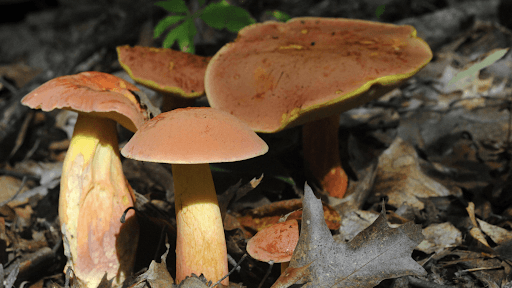You’ve probably heard the word “troop” used in a variety of other contexts. What does it mean in the study of mushrooms, and why did we choose it for our company name?
When it comes to classifying mushrooms, mycologists and mushroom foragers have their own set of terminology to describe the way mushrooms are dispersed across a given area. These terms might overlap a little. For example, you can probably guess what it means if we tell you a mushroom is “solitary”, but the name is a bit misleading. Because of the network of filament-like mycelium that grows unseen in the ground, solitary mushrooms are rarely actually alone — just farther away from other mushrooms.
Multiple mushrooms growing side-by-side together, usually from a single fruiting mycelial body, are known as clusters. Versus a wide area containing a larger number of mushrooms relatively far apart and in unpredictable patterns are said to be “gregarious”.
When a group of mushrooms are referred to as a “troop”, they’re generally a bit farther apart than a cluster of mushrooms, but more tightly-packed than a gregarious formation. This usually means that several fruiting bodies have been formed within a small area. During especially wet and rainy years, mushrooms readily grow in troops, but they’ll do so in drier years as well if troops are typical in their fruiting patterns. It depends on the species.
Types of Mushroom Troops
Mushroom troops may appear random at first, but certain varieties of mushrooms are mycorrhizal, meaning that their growth is dependent on green plants. These species form troops or clusters along the root systems of plants and trees, causing the mushrooms to appear wherever their host plants grow and spread out underground.
“Fairy rings” are circular patterns of mushrooms that might be seen when mycelium spreads out evenly in the ground from a single spore, and a troop of mushrooms sprouts in a ring shape as a result.
Why Troop?
We chose to use Troop as our name, not only because of its association with mushrooms — but to tell you a bit about us. Mycelium doesn’t just connect mushrooms, it binds entire woodland ecosystems together beneath the surface. We’re a close, tight-knit group of people, and we want to connect with all of you to encourage happy, healthy living with the people you love, or your “troop”. We hope you’ll join ours as well.
Sources:
- http://www.tanelorn.us/data/mycology/myc_id_pattern.htm
- https://blogs.scientificamerican.com/observations/the-mycelium-revolution-is-upon-us/
- https://www.prospectmagazine.co.uk/magazine/entangled-life-book-review-mushrooms-fungi-biology-science
- http://www.mushroomthejournal.com/greatlakesdata/Terms/troop269.html
- https://untamedscience.com/biology/ecology/mycorrhizae/

